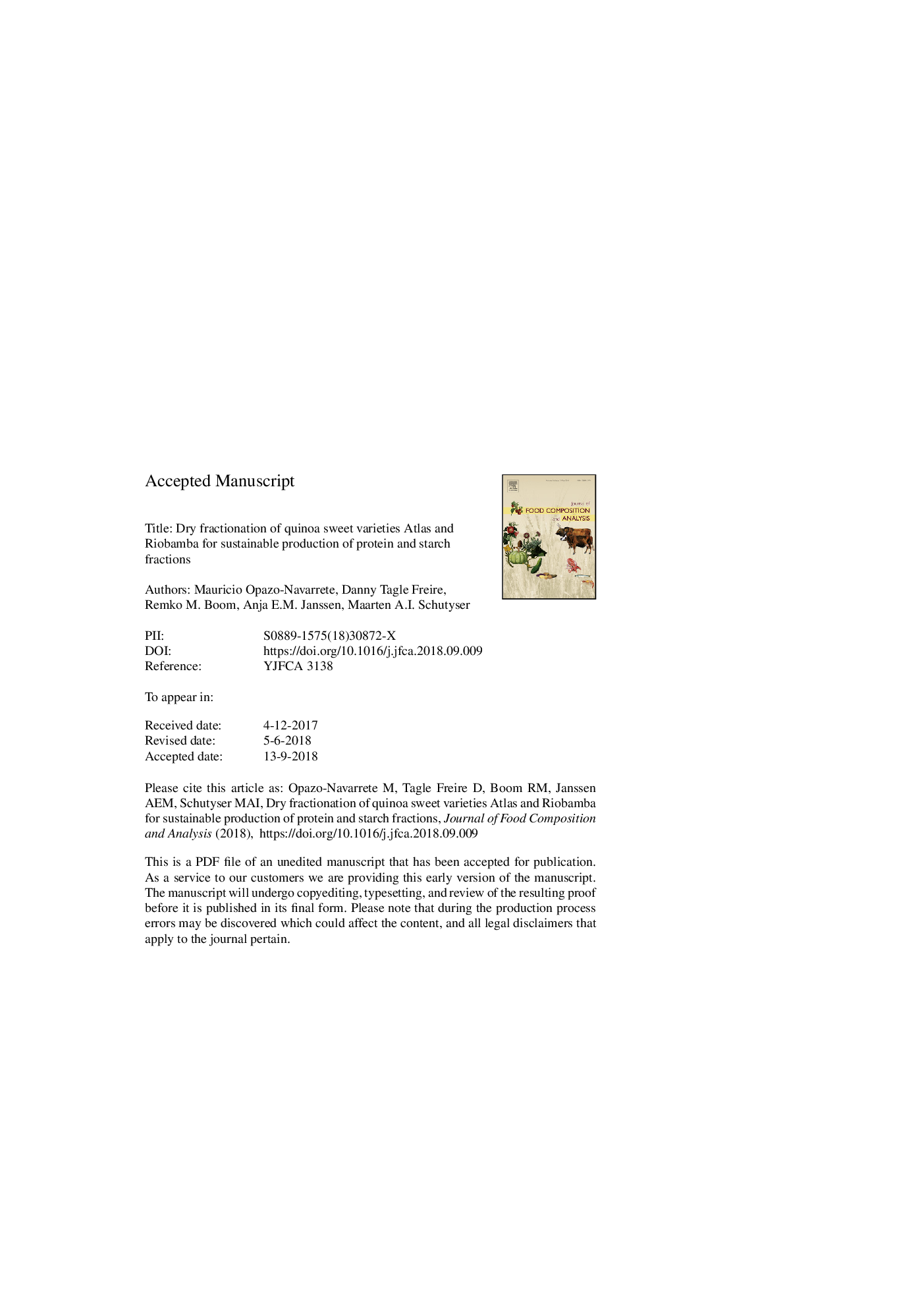| Article ID | Journal | Published Year | Pages | File Type |
|---|---|---|---|---|
| 11032248 | Journal of Food Composition and Analysis | 2018 | 27 Pages |
Abstract
Dry milling and subsequent sieving were evaluated as an alternative to the conventional wet extraction of quinoa (Chenopodium quinoa Willd.) proteins and starch. Specifically, quinoa sweet varieties have the potential to be dry fractionated. Dry fractionation of quinoa is an alternative and more sustainable route for producing protein-enriched and starch fractions than conventionally wet fractionation. Quinoa seeds were subjected to coarse grinding and subsequently sieved using different sizes of sieves to obtain fractions enriched in protein and starch. The protein-enriched fractions contained â¼32% proteins (32âg/100âg dry solids) while the starch-rich fractions contained 86-89% starch (86-89âg/100âg dry solids). The quinoa fractions were characterised and compared to wet-isolated starch and protein. The gelatinization temperature of the starch-rich fraction was influenced by the residual presence of proteins. The starch-rich fraction also had different pasting properties than starch isolate. The unheated protein-enriched fractions showed high water retention capacity and solubility, which could be potentially interesting to apply in gluten-free products.
Keywords
Related Topics
Physical Sciences and Engineering
Chemistry
Analytical Chemistry
Authors
Mauricio Opazo-Navarrete, Danny Tagle Freire, Remko M. Boom, Anja E.M. Janssen, Maarten A.I. Schutyser,
